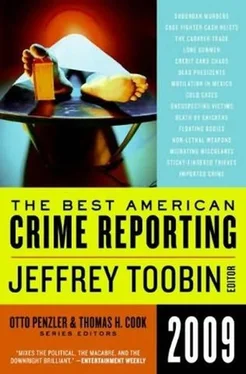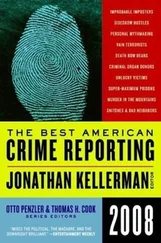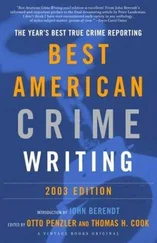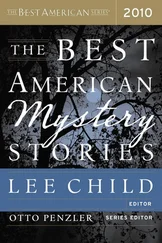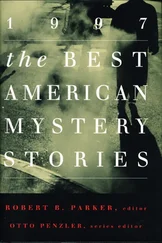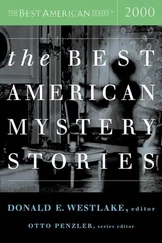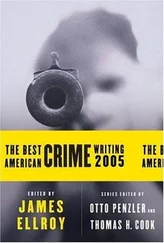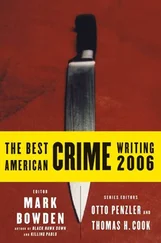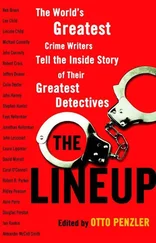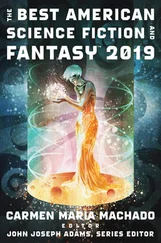The racial divide is obviously less overt in John White’s Long Island than it was in Napoleon White’s Alabama. Tom Maloney, who’d also graduated from Miller Place High School, had apparently thought of Aaron White as a friend. Alex Delgado, who drove Dano Cicciaro to Aaron’s house on August 9th, had been there before as a guest. In John White’s testimony, Delgado was described as Hispanic. Joanne Cicciaro, who by name and appearance and accent might be assumed to have come from one of the many Italian-American families that moved to Suffolk County in recent decades from the boroughs, is actually Puerto Rican-a fact brought up to reporters by the Cicciaros in countering any implications of racism in Dano’s upbringing. (“Our family is multicultural.”) Even without those complications, the case for race memory would be harder to make to white people than to black people. White people are likely to say that times have changed: these days, after all, a real-estate agent who tried to steer John White away from buying a house in an overwhelmingly white Long Island neighborhood would be risking her license.
If times have changed, black people might ask in response, how come Long Island is still so segregated? In his summation, the prosecutor asked a series of questions as a way to illustrate how White’s behavior had deviated from the behavior of a reasonable person. Two of the huge black men who had been part of Aaron White’s escort were sitting in the courtroom at the time, and when the D.A. asked whether a reasonable person would really be guided partly by the memory of a Ku Klux Klan attack that happened years before he was born, they both began to nod their heads.
In that closing statement, James Chalifoux said that it wasn’t until the trial began that John White started talking about a lynch mob. (It’s true that in a newspaper interview in September of 2006 White seemed to downplay race, but it’s also true that in his grand-jury testimony, less than a month after the shooting, he spoke about a “lynch mob.”) Race, Chalifoux said, was being used to distract the jurors from the simple fact that by walking down the driveway with a loaded pistol John White, a man intimately familiar with firearms, had engaged in conduct that had recklessly caused the death of Dano Cicciaro. Matching up testimony with cell-phone logs, Chalifoux argued that the Whites had more time before the arrival of the cars than their story of a panicky few minutes implied. Chalifoux acknowledged that Dano and his friends were wrong to go to the Whites’ that night, that Dano was wrong to use a racial epithet when he phoned Aaron White, and that John White had found himself “in a very bad situation that night and a situation that was not his fault.” But how White responded to that situation, Chalifoux said, was his fault.
Chalifoux’s summation followed that of Frederick K. Brewington, a black attorney, active in black causes on Long Island, who was Paul Gianelli’s co-counsel. “Race has so much to do with this case, ladies and gentlemen, that it’s painful,” Brewington told the jury: Dano Cicciaro and his friends thought they had a right to go to John White’s house and “terrorize his family with impunity and arrogance” because of “the false racial privilege they felt empowered by.” In Brewington’s argument, John White thought, “‘Once they see I have a gun they’ll back off’…but they did not take ‘the skinny old nigger’ seriously.” While Chalifoux presented Joseph Serrano’s slur on the 911 tape as, however deplorable, an indication that the argument at the foot of the driveway didn’t include the barrage of insults that the Whites had testified to-if it had, he said, “you would have heard racial epithet after racial epithet after racial epithet”-Brewington saw it as a mirror of the boys’ true feelings. “What we do under cover of darkness sometimes comes to light,” he said.
Shortly after the beginning of deliberations, ten jurors, including the sole African-American, were prepared to convict John White of having recklessly caused Dano Cicciaro’s death. Two jurors resisted that verdict for four days. Then they capitulated. They later told reporters that they felt bullied and pressured by jurors who were impatient to be liberated as Christmas approached. In a courtroom crowded with court officers, the jury reported that it had found John White guilty of manslaughter and a weapons charge. The Cicciaros and their supporters were ecstatic. Dano’s parents seemed to take John White’s conviction principally as proof that the accusations of racism against their son had been shown to be false. “My son is finally vindicated,” a tearful Joanne Cicciaro said, outside the courtroom. Daniel Cicciaro, Sr., said, “Maybe now they’ll stop slinging my son’s name and accusing him of all this racism.” Outside the courthouse, friends of Dano, Jr., honked their horns and revved their engines and chanted, “Dan-o, Dan-o, Dan-o.” The next day, Sunday, the celebration continued with a sort of open house at Dano’s Auto Clinic, which bore a sign saying “Thank You Jurors. Thank God. Dano Jr. Rest in Peace.” In Miller Place, John White briefly spoke to the reporters who were waiting in front of his house. “I’m not inhuman,” he said. “I have very deep feelings for this young man.” But before that he went to the Faith Baptist Church, in Coram, and sang in the choir.
“JOHN WHITE IS A HERO,” Frederick Brewington said two weeks later, addressing a crowd of several hundred people, almost all of them black, who had gathered on a cold Saturday afternoon in front of the criminal-court building in Riverhead. He repeated, “John White is a hero.” The guilty verdict had made White the sort of hero all too familiar in the race memory of African-Americans-someone held up as an example of the unjustly treated black man. On the podium were black officeholders, speakers from the spectrum of black organizations on Long Island, and two people who had come from Manhattan-Kevin Muhammad, of Muhammad Mosque No. 7, and Al Sharpton. A lot of N.A.A.C.P. people were in the audience, and so were a lot of people from Faith Baptist Church. Various speakers demanded a retrial, or called for the resignation of the district attorney, or pointed out the difference in how white homeowners in similar situations have been treated, or called for the young white men involved to be indicted. (“We will raise this to a level of national attention until these young men are brought to justice,” Sharpton said.) There were chants like “No Justice-No Peace” and, loudest of all, “Free John White.”
That chant was not meant literally. For the time being, John White is free-he addressed the rally briefly, mainly to thank his supporters-and his attorneys hope that, while an appeal is pending, he will be allowed to remain free after his sentencing, scheduled for March 19th. (“I think he should get as much time as possible,” a Post reporter was told by Jennifer Martin, whose response to Aaron White’s arrival at her house set the events of August 9th in motion. “I really do.”) Until the sentencing, White is back to rising at three-thirty every morning to go into the city and patch utility holes. Everything he was quoted as saying in the aftermath of the shooting that night turned out to be true. The fatalism reflected in his statement to Officer Murray as he held out his hands to be cuffed was well founded. Aaron White accepted the fact that those friends of his had indeed turned on him. In his testimony, he said, “They have no respect for me or my family or my mother or my father… They have no respect for life whatsoever. They’re scum.” And, of course, John White had understood the situation well when he told his wife that they had lost their dream house-a comment that, as it turned out, particularly incensed Joanne Cicciaro. (His sorrow, she said to reporters after testimony had ended, “was all for themselves-sorrow about losing their house, about their life changing. He never said, ‘Oh, my God! What did I do to that boy? Oh, my God. This kid is bleeding on the driveway. What did I do to him?” He had no sympathy, no sorrow for shooting a child.”) Even before the trial, 40 Independence Way was listed with a real-estate broker. Its description began, “Stately 2 year young post-modern colonial in prestigious neighborhood.”
Читать дальше
